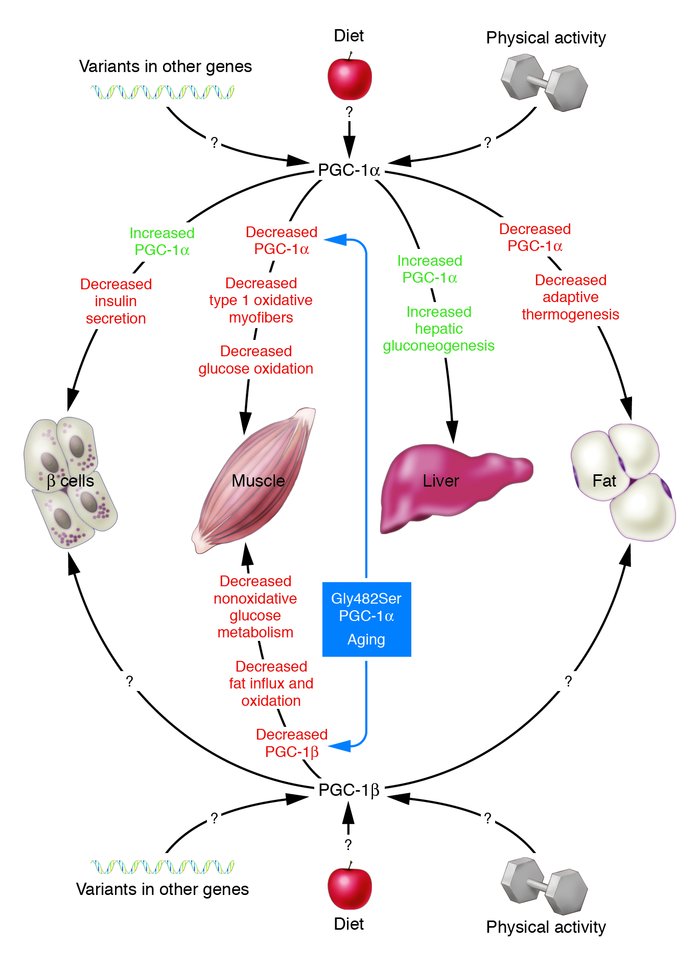Abstract
The Randle cycle, which has been invoked to explain the reciprocal relationship between fatty acid oxidation and glucose oxidation, has long been implicated as a potential mechanism for hyperglycemia and type 2 diabetes mellitus (T2DM). Now genetic, functional genomic, and transgenic approaches have identified PPARγ coactivators (PGC-1α and PGC-1β) as key regulators of mitochondrial number and function. They regulate adaptive thermogenesis as well as glucose and fat oxidation in muscle and fat tissue, gluconeogenesis in liver, and even glucose-regulated insulin secretion in β cells. PGC-1α and PGC-1β mRNA levels and the mitochondrial genes they regulate are decreased in muscle of people with prediabetes and T2DM. A new report indicates that PGC-1α and PGC-1β mRNA levels decrease with age in individuals with a genetic variant in PGC-1α, and these decreases correlate with alterations in whole-body glucose and fatty acid oxidation. These findings provide insights into how aging modifies genetic susceptibility to alterations in oxidative phosphorylation and T2DM.
Authors
Alan R. Shuldiner, John C. McLenithan
Figure 1



Copyright © 2025 American Society for Clinical Investigation
ISSN: 0021-9738 (print), 1558-8238 (online)

